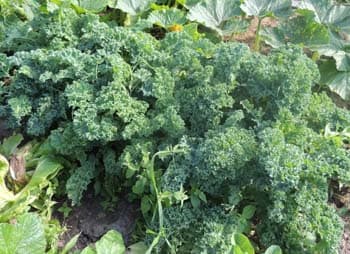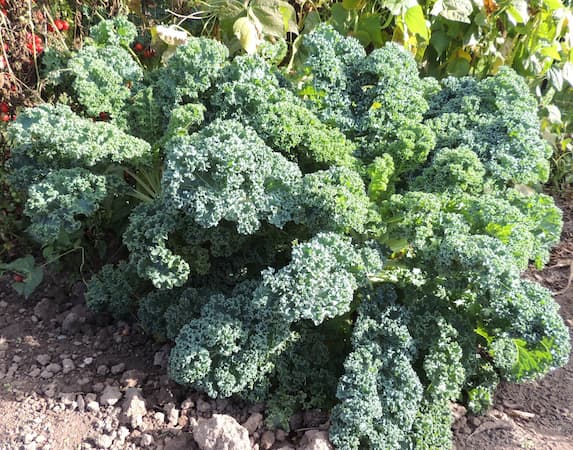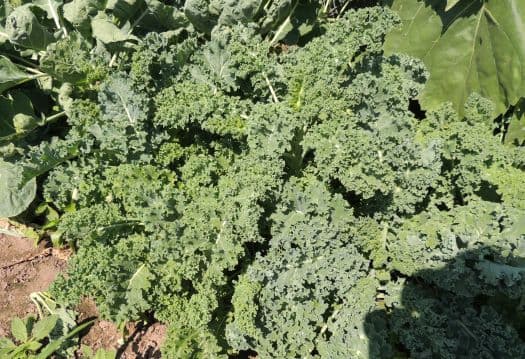How to Grow Kale

How to Grow Kale in Your Garden
As a member of the cabbage family, garden Kale plants are not well known. Collards and Kale are closely related. They are strong flavored, open-leafed cabbage. They do not form a large, round head. Kale is most popular in the southern part of the U.S.A. Kale is a cool-weather crop, growing well into the winter months in some areas. Use this “How to Grow Kale” guide and grow an even better crop in your home garden this year.
Some varieties of Kale are used in flower gardens. Flowering Kale is a colorful flower.
Despite being easier to grow than regular cabbage, why are very few gardeners growing Kale? The answer is taste. Kale has a strong taste and can be quite bitter, especially in warmer weather. Like other members of the cabbage family, Kale takes on a sweeter flavor after the first frost.
Other names: Kale is also called Borecale
Did You Know? Kale has been cultivated for over 6,000 years.
Nutritional and Health Value of Kale
Kale is currently the rage! It’s the latest “superfood”. The nutritional and health benefits of Kale are tops in the vegetable world. It is simply the healthiest vegetable on the planet.
Kale helps fight cancer, as it is high in antioxidants (carotenoids and flavonoids). It is low in cholesterol, helping you to fight heart disease. And, it is also good for eye health. The only negative thing we have read is that it can interfere with calcium absorption.
One cup of kale has:
Just 34 calories
7 g. carbs
3 grams protein
4 g. fats, low in saturated fats
29mg sodium
high in fiber
134% of the daily requirement of Vitamin C
684% of the daily requirement of Vitamin K
684% of the daily requirement of Vitamin B
loaded with flavonoids

Varieties of Kale
There are over 50 varieties of Kale. The most common varieties are:
Blue Scotch Curled
Siberian Improved Dwarf – Not as curly as Blue Scotch
Flowering, or Ornamental Kale – popular in flower beds and rock gardens. They produce colorful leaves or “flowers”.
How to Grow Kale - Planting Seeds
Many areas can grow a spring and a fall crop. All members of the cabbage family withstand frosts and freezes. So, plant your seeds or seedlings in your garden as one of the first crops. Then, if you time your crop right, you will have a couple of weeks in the middle of summer’s heat and humidity when you are not growing kale. This is actually good, as these plants do not like high heat and dry conditions.
Garden Tip: If you plant early in the year, consider using a raised row or bed, to allow better drainage during early spring rains.
Indoors: Start your spring crop indoors four to six weeks before planting outdoors. Plan to plant your seedlings outdoors very early in the season. It can be planted outdoors before the last frost date for your area.
Plant seeds in containers 1/2 inch deep, in sterile starting mix. Water thoroughly once, then lightly after the seeds have sprouted. Provide plenty of sunlight or artificial grow lights so the plants do not become spindly. Boost your plant’s health with a light application of liquid fertilizer once or twice during this period.
Outdoors: Sow seeds in rows. Or, plant in a separate area and transplant to the row after a few weeks. We recommend planting them together in a seedbed and transplanting the seedlings. This allows for better control of the spacing of the seedlings. This is a common method for the second planting. Plant seeds 1/2 inch deep. Water well and make sure to keep the top level of soil moist, especially during the drier mid-summer planting.
Final spacing: 18 to 24 inches apart, in rows three feet apart. The outer leaves of a healthy plant will spread and cover a lot of space.
Garden Tip:
For direct seeding, prepare the soil first. Then, place tomato cages (to mark your planting) 18 to 24 inches apart. Sow several seeds inside the ring of the cage. Thin to two plants a week after germination, and one plant after a couple of weeks. This avoids transplant shock and affords proper spacing for maximum growth. Remove the tomato cages after the seedlings have begun to grow.

How to Grow Kale - Season Long Care
Growing Kale is easy.
Because Kale does not form heads, it is easier to grow than cabbage. The young leaves can be harvested as the plant grows for salads, soups, and other recipes.
Kale plants prefer full sunlight. Kale plants grow well in average and even poorer soils. But like any plant, they respond favorably to richer soil high in nutrients.
Note: Make sure to provide plenty of nitrogen for a greener crop.
Keep the soil moist, but not wet. Dry conditions lead to bitter vegetables in all of the vegetable world. Kale is no exception.
As a cool-weather crop, established Kale plants can withstand frost.
Ideal Soil pH: 6.0 – 7.5. Ideal Soil pH by vegetable.
Also, see:
Soil Temperatures – Ideal germination temperature by vegetable
Insects and Pests
All members of the cabbage family are extremely susceptible to insects. Kale is no exception. Among the most common are aphids, and cabbage loopers. Cabbage loopers the larva stage of a moth. Those white moths that visit your garden and yard are the culprits. Effective treatment in the home garden is to place a screen over the plant so the moth cannot lay her eggs. Commercial growers apply insecticides to control them. Aphids are controlled by frequent spraying. Organic controls in the form of soap or garlic sprays are also effective.
Plant Disease
The plants are fairly resistant to most diseases.
Plant Problems – Diagnosis, causes, and cures for many common plant problems.
How to Grow Kale - Harvest Time
Days to Maturity: Plants mature in 55 – 60 Days.
The more tender, young leaves can be harvested as soon as they reach a size that is easy for picking.
Plant Hardiness
Kale, as previously mentioned, are among the hardiest of annuals. The plants can withstand temperatures into the upper 20’s. You know you have a hardy plant when you go out to the garden in December, brush a little snow away, and harvest some vegetables.
Did you Know? For all members of the cabbage family, flavor is better in cool weather. Most growers will attest that the flavor is best after a frost.
Eggplant Recipes
Related Articles
We hope you liked this article on "How to Grow Kale. Please tell your friends about us.
Please support our site. Shop for:
- rmmatthews100@hotmail.com
- 585-721-6528
- Rochester, NY
©1999-2024 GardenersNet.Com, All Rights Reserved

